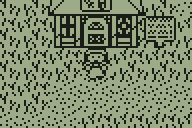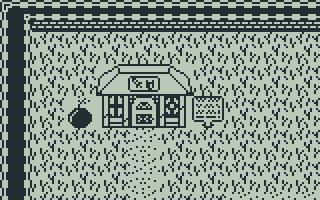This section allows you to view all posts made by this member. Note that you can only see posts made in areas you currently have access to.
Messages - chickendude
Pages: 1 ... 45 46 [47] 48 49 ... 55
691
« on: July 12, 2012, 10:28:53 am »
I thought it was very well designed and looked very professional. Right from the beginning everything sorta drew me in, the world was really pretty and made me want to explore even more. The only two things are: 1) the text wrapping, and 2) at times, like walking around corners or buildings and whatnot it looks a little clunky. Other than that, i was really really impressed by it and would love to see more! It felt very polished and now i just want to play more! This is something that would definitely stay on my calculator  Thank you for writing it!
692
« on: July 12, 2012, 09:31:15 am »
Those all look amazing, the RPS game also looks surprisingly fun (i like the "AI" difficulty levels  ) and has a really pretty interface. EDIT: I really wanted to vote for the RPS game because i think it was really well done, but E:P and Vortex just blew me away. U,,nfortunately, i couldn't figure out how to get Cyanoid working either  E:P was just amazing, i just wanted to test them out quickly but spent a solid half hour playing it without even realizing. The only two things that bugged me a little were the lack of word-wrapping and how the player seemed to walk over the corners of some buildings, etc. To be honest, it almost felt like playing Pokémon for the first time when i was ten... M.E.T.A. was also pretty cool, i liked the different transformations and thought that was a really interesting idea. The only things i can really say against it have to do with the transitions: it was sometimes a little disorientating jumping near the top of a screen (though that may have been part of the challenge). The other thing was that maybe there should have been some acceleration when falling from the top of a screen (instead of falling pixel by pixel). Again, it's not that big of a deal and overall i thought it was pretty fun. Next, Vortex: while maybe it didn't seem quite as polished as E:P, i think this was the most fun game of all of them for me. It was cool being able to play against an AI and i liked building, destroying, buying/upgrading, etc. I think if this game had link play it would be right up there with Bomberman 83 for me (i dunno if anyone still plays that, but i spent countless hours battling friends in math class back in the day). The only thing is the games tended to be pretty short and there wasn't usually enough time to upgrade (and not many coin boxes showing up). I did see a little machine that looked like it was dropping off a box though, that was pretty cool  ZAMPO: another game that seems to have a lot of potential, it's just a little difficult to play because it's pretty slow. Though maybe like the readme says it would be better with at 15mhz. People have been talking about making an RTS for a long time, it's pretty cool to see one already pretty far along. I'm really interested to see where this will go! RPS: Wow. I was really impressed by this game, i think it was really creative (and the achievements system was pretty cool). I really have no idea how the AI system works, though. In the end, it couldn't really stand up to Vortex as far as being entertaining to play again and again, but it IS a really original concept and i must say that i am impressed. Congrats zTrumpet, i really wanted to give you my vote (which i know doesn't mean much, sorry)! I think everyone did a great job and all the entries were really cool. Thanks for sharing everyone 
693
« on: July 12, 2012, 08:39:57 am »
Hier ist eine neue Version des RPGs:  
694
« on: July 09, 2012, 01:43:05 am »
Ah alright, thanks for the info  So the stack is 400 bytes? The Symbol table is just another (TI's) name for the VAT? I really have no idea how the actual calculator works.
695
« on: July 09, 2012, 01:43:00 am »
I'm curious how you did that, is it just a large mask masked over your tilemap? I dunno how your tilemapper works, but i guess you could even update only the center part of the screen. It looks great and in my opinion much more elegant (and probably much less of a headache to code  ) than those clunky blocks you often see. It's essentially a little radar 
696
« on: July 07, 2012, 06:16:58 am »
Yeah, i've already looked through (and saved an offline copy of) that amazing list. I was just wondering what exactly the other program was doing, though unless i'm missing something it looks like it's using the space from $F000 and below:
; FE6Eh fin de la memoire disponible (English: End of available memory)
; VARIABLE
mem .equ 0F000h
dessine_hl .equ mem
dessine_ix .equ mem-2d
ecran_x .equ mem-4d
ecran_y .equ mem-6d
;...removed the rest of equated variables
ecran4 .equ mem-945d
ecran3 .equ mem-1713d
tete_retourne .equ mem-1932d
flag_rafraichi_decor .equ mem-1933d
flag_fondue_noir .equ mem-1934d
fixe_fps .equ mem-1936d
697
« on: July 05, 2012, 09:07:09 am »
I'm pretty sure in the normal running of the calculator, you rarely will have more than 50 bytes of data pushed onto the stack. Where exactly does the stack start? I always assumed it started (or rather, ended) at $F000, but that's like 4kb of stack space. Is there any reason you shouldn't touch this area if you know your program won't come close to touching it? And where exactly does the stack... end? I was just looking through the source to a program and i think it uses that area for variables/as a gbuf for its grayscale routines.
698
« on: July 04, 2012, 11:19:47 am »
I don't understand the theory behind that algorithm, but you could save a couple clocks with SMC  And is ShuffleDeck a hint at what your next project might be?
699
« on: June 24, 2012, 03:30:26 am »
Awesome, thanks. I just downloaded it, though i must admit it's a little overwhelming, i'll have to sit down some time and try reading through it.
700
« on: June 24, 2012, 02:49:40 am »
How do the shift instructions work? Will an lsr.w #3,dn perform three shifts (like z80's slr rr \ slr rr \ slr rr)? Or will shifting 1 bit use the same number of clocks as shifting 8 bits? Do you know where i can find information on how long instructions take to execute? In the programmer's manual it lists the binary construction of each of the instructions, but i can't seem to find how many cycles an instruction will take.
701
« on: June 23, 2012, 11:15:27 am »
I'm curious, apart from the doors automatically closing, what weren't you satisfied with about ABIV? That game was awesome and together with Dying Eyes (and Bubble Bobble) will always hold a special place in the z80 section of my heart 
702
« on: June 21, 2012, 08:31:25 am »
* mulu and divu usually have .w size, and they're not used in the usual sprite routines because they're very slow. mulu.w #30,dn is replaced by a series of add.w, lsl.w and sub.w; divu.w #8,dn is simply the much faster lsr.w #3, dn  I wasn't sure about that, i figured the mul/div instructions would be slower, but i didn't know. In z80 i would just shift over a few times or add the number to it's self. So divu.w #8 would be faster than lsr.w #3? Does multiplication take up the same number of clocks for every calculation? That is, if i multiply by two will it take the same number of clocks as multiplying by 2555? Where can i find the clock cycles each instruction takes? I'm gonna try to add smoothscrolling and see how the speed compares to the z80. I imagine even this bloated code will run faster than my z80 tilemap routine, especially without the slow LCD. * strictly speaking, the correct mnemonic for "dbra" is "dbf"; I read this in the manual  * "lea LCD_MEM,a0" should be "lea LCD_MEM.w,a0", to make sure that the assembler uses the shorter form; And it gets sign extended to a long-word? * "add d1,a0" should be "adda.w d1,a0". The compiler fixed this for me, right? * "adda.w #00,a2" is superfluous  Actually, the #00 gets overwritten through SMC: "move.b (a2)+,mapWidth+3" I'm not sure if this is good practice or not on the 68k, but it's something i do all the time in z80  @aeTIos: they're taken from an RPG i was working on before my old laptop blew up and i lost a lot of the code: 
703
« on: June 20, 2012, 07:29:02 am »
Yeah, i guess you generally just create your own space in RAM to use for storage. And yes, those sprites do look surprisingly familiar... 
704
« on: June 19, 2012, 11:48:10 am »
I was looking through some old code of mine today and found "getHL()" all over the place. Btw, what is the ez80? It sounds pretty cool, what devices use it? 
705
« on: June 19, 2012, 12:32:47 am »
Now that i know you've got to stay word-aligned things have started to go a little more smoothly, though i still make lots of mistakes especially when the upper bytes of a register corrupt the results of a calculation, but last night i finally got a little tilemap routine up and running: ;a2=pointer to map data
drawTileMap:
move.b (a2)+,mapWidth+3 ; the first byte contains the width of the map
clr.l d1 ; d1 = y position on screen of current tile, set to 0 and clear out upper bytes
move.l #6,d3 ; number of rows to draw
;d0=x
;d1=y
;d2=col counter
;d3=row counter
;a2=mappointer
dTM_vert
clr.l d0
move.w #9,d2
dTM_horiz:
movem.w d0-d3,-(sp) ; push x/y and the counters onto the stack
move.b (a2)+,d2
mulu.b #32,d2 ; each sprite is 32 bytes
lea tiles(pc,d2),a1
bsr drawSpriteAligned
movem.w (sp)+,d0-d3 ; retrieve pushed values
add.w #16,d0 ; move over 16 pixels to draw next sprite
dbra.w d2,dTM_horiz
add.b #16,d1
mapWidth:
adda.w #00,a2
dbra.w d3,dTM_vert
rts
;----------------------------
; drawSpriteAligned: draw an aligned sprite to LCD
; d0 = X position
; d1 = Y position
; a2 = sprite location
drawSpriteAligned:
mulu.b #30,d1 ; screen is 30 bytes wide
lea LCD_MEM,a0 ; start of LCD_MEM
add d1,a0 ; add the Y offset to a0
divu.b #8,d0 ; divide d2 by 8
add d0,a0 ; add X offset to a0
move.w #15,d2 ; display 16 rows
dSA_loop:
move.w (a1)+,d1 ; put the word of data into d1
eor.w d1,(a0) ; xor (ExclusiveOR) the byte (well, word) into a0 (the LCD)
lea 30(a0),a0 ; shift down a row
dbra d2,dSA_loop ; decrement and repeat until d2=0 (after the routine, d2 will = -1)
rts
Which results in:  (there are two leftover rows on the bottom, is that how the screen is set up?) Also, does anyone have any saferam information for the 89? And is there an easy way to shift a byte across registers? It's something you do all the time in z80...
Pages: 1 ... 45 46 [47] 48 49 ... 55
|
 Thank you for writing it!
Thank you for writing it!
 Thank you for writing it!
Thank you for writing it!

 ) and has a really pretty interface.
) and has a really pretty interface.


